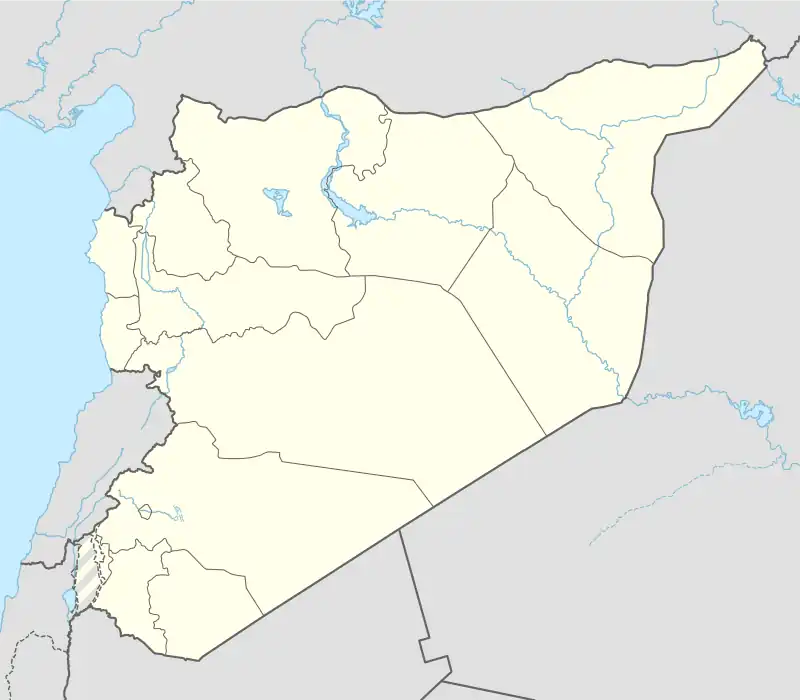Umm al-Zaytun
Umm ez-Zeitoun | |
|---|---|
Village | |
 Umm al-Zaytun Location in Syria | |
| Coordinates: 32°54′21″N 36°36′20″E / 32.90583°N 36.60556°E | |
| Country | |
| Governorate | as-Suwayda |
| District | Shahba |
| Subdistrict | Shahba |
| Population (2004)[1] | |
| • Total | 1,913 |
| Time zone | UTC+2 (EET) |
| • Summer (DST) | UTC+3 (EEST) |
Umm al-Zaytun (also spelled Umm ez-Zeitoun) is a village in the al-Suwayda Governorate in southwestern Syria. It is situated along the southeastern edge of the Lejah lava plateau, northwest of the city of al-Suwayda. Umm al-Zaytun had a population of 1,913 in the 2004 census.[1] Its inhabitants are Druze.
History
Umm al-Zaytun had been abandoned sometime in the middle Ottoman era, but was settled by Druze prior to 1810. It was one of the earliest Druze settlements in the Lejah plateau.[2] The village was controlled by the Bani Amer clan.[3]
In 1838, it was noted as a village, situated "the Luhf, east of the Lejah, i.e. in Wady el-Liwa".[4]
In 1839, Ibrahim Pasha, the Egyptian governor of Syria, sent a conscription expedition of 100 cavalry to subdue the Druze of Hauran. The latter engaged and destroyed Ibrahim Pasha's troops at Umm al-Zaytun.[5] The Egyptian army withdrew from Syria in 1841 and Ottoman rule was restored. Umm al-Zaytun joined the Hauran Druze Rebellion of 1910 was subdued by Ottoman troops commanded by Badr Khan Bey.[6]
Archaeology
Roman Empire-era structures are located in Umm al-Zaytun.[7] In particular are the ruins of a religious building with a large stone facade and a room with niches suited for statues.[7] The inscription found at the building date to 282 CE and mention and describe the building as a "sacred kalybe".[7] This type of building is relatively unique in Syria, being found only in Umm al-Zaytun and nearby Shaqqa and Hayyat.[7]
See also
References
Bibliography
- Butcher, Kevin (2003). Roman Syria and the Near East. Getty Publications.
- Firro, Kais (1992). A History of the Druzes. Vol. 1. BRILL. ISBN 9004094377.
- Murphy, C.C.R. (1921). Soldiers of the Prophet. John Hogg. p. 18.
- Robinson, E.; Smith, E. (1841). Biblical Researches in Palestine, Mount Sinai and Arabia Petraea: A Journal of Travels in the year 1838. Vol. 3. Boston: Crocker & Brewster.
- Socin, A. (1876). Palestine and Syria: Handbook for Travellers. Karl Baedeker.